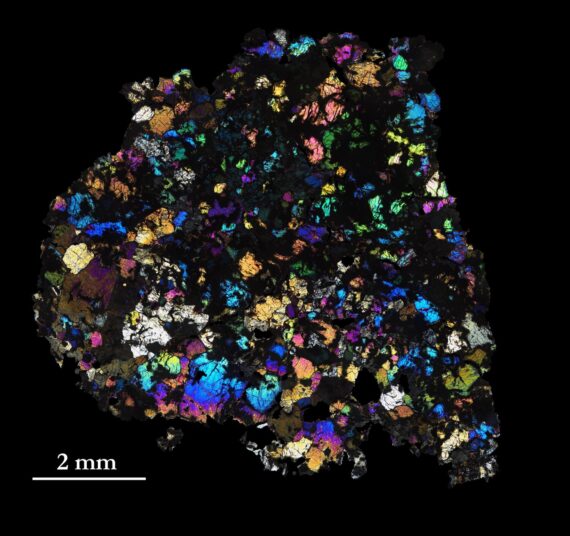
Science & Medicine
Dr Tim Gregory: The Beauty of Meteorites
09/09/2020
12/07/2022
The atom made its name during the 1940s as the potential destroyer of worlds, but its legacy spans far beyond nuclear weapons. By coming to know the nuclear world, we humans have discovered the nanoscopic building blocks of reality; we have done the work of stars by synthesising new chemical elements; and by measuring radioactivity in rocks, we have unpicked the history of our planet and the solar system.
Using our technological prowess, we have also split the atom, and in doing so, we have tapped a source of energy so immense that it has the potential to power our civilisation into the far future: nuclear power.
Splitting apart atoms of uranium releases vast amounts of energy, but it creates exotic forms of matter as a by-product not normally found on Earth. This by-product is intensely radioactive and chemically bizarre. Chemistry of this sort is not found anywhere else in the universe (unless it turns out that intelligent extraterrestrial life forms are in the business of splitting atoms, too). This by-product is, rather unflatteringly, called nuclear waste.
Fresh from a reactor, nuclear waste is so radioactive that it can take several years to cool down, but it still radiates lethal amounts of radiation once it’s cooled off. This makes it difficult to manage.
Nuclear waste will remain dangerously radioactive for millions of years. This poses a problem: what do we do with it in the meantime? One solution, on which Finland is leading the way and the UK may soon follow, is to seal nuclear waste inside canisters and bury it deep underground. An “out of sight, out of mind” approach, perhaps.
But nuclear waste presents the world with new opportunities, and mindsets are slowly beginning to turn. Rather than burying nuclear waste and wishing it didn’t exist, scientists are taking advantage of the exotic chemistry and rare isotopes by finding novel uses for them.
For example: it is well known that radiation can cause cancer. But radiation — if treated carefully — can also help cure it.
A radioactive isotope that does not exist naturally on Earth but is common in nuclear waste is yttrium-90. Yttrium-90 can be injected into cancerous tumours, and as it decays, it releases its energy into the cancerous cells and destroys the tumour from within. Time-to-progression is vastly reduced, and quality of life is improved. Other isotopes used as cancer treatments include actinium-225 and bismuth-213, neither of which exist naturally on Earth but are common in nuclear waste.
Another novel use for nuclear waste is in space exploration. In the outer solar system — where solar panels are of little use — spacecraft have historically been powered by radioactive plutonium-238. Alarmingly, the worldwide plutonium-238 stock is running incredibly low.
Again, nuclear waste provides a neat solution to the problem. An element that does not exist naturally on Earth – americium – exists in abundance in some types of nuclear waste. By extracting this rare chemical element from the UK’s stockpile of nuclear waste, researchers in Britain are helping fuel the next generation of deep-space explorers and spacecraft into the far future.
And so, as the saying goes, where there’s muck there’s brass. By shifting our mindset and viewing nuclear waste as an opportunity rather than a curse, we can utilise the exotic chemistry and unique isotope composition to solve some of the world’s problems. From cancer treatments to space batteries, nuclear waste has a lot to offer.
Dr Tim Gregory is a nuclear chemist, author and presenter working at the heart of the British nuclear industry. He spends his days in the laboratory measuring the precise chemical and isotopic composition of radioactive material, at the cutting-edge of nuclear science.
To book Tim to speak at your event, please contact speaking@northbanktalent.com, and for all broadcast enquiries, broadcast@northbanktalent.com.